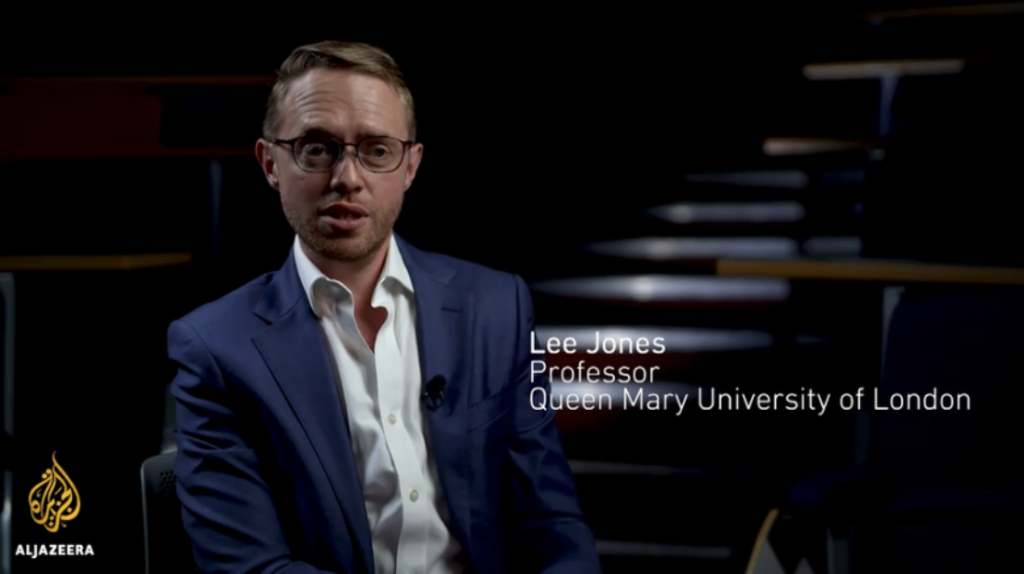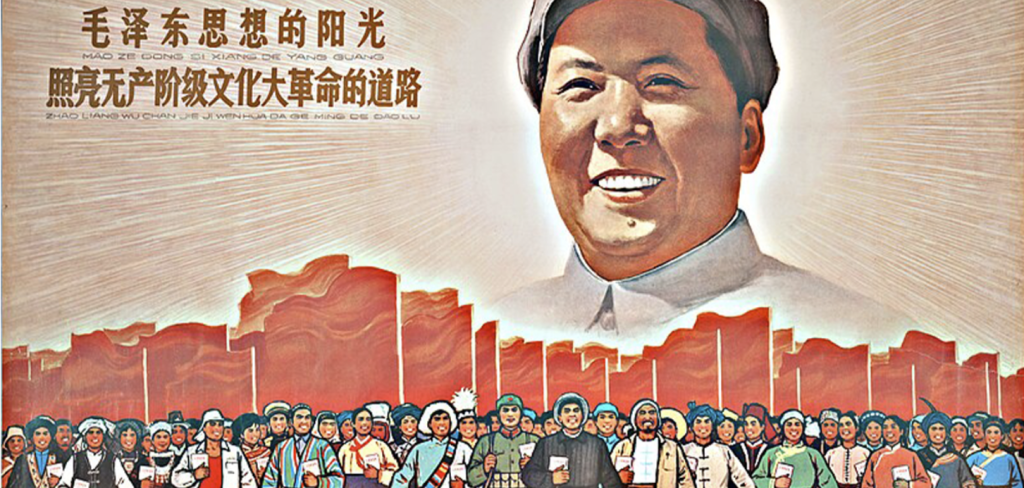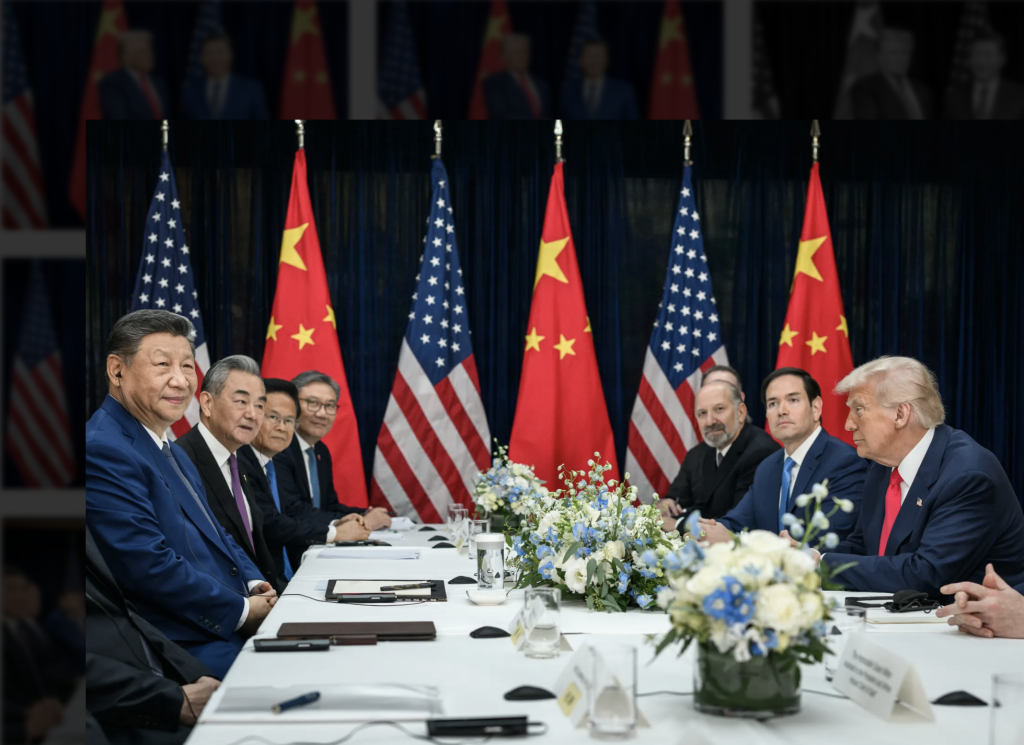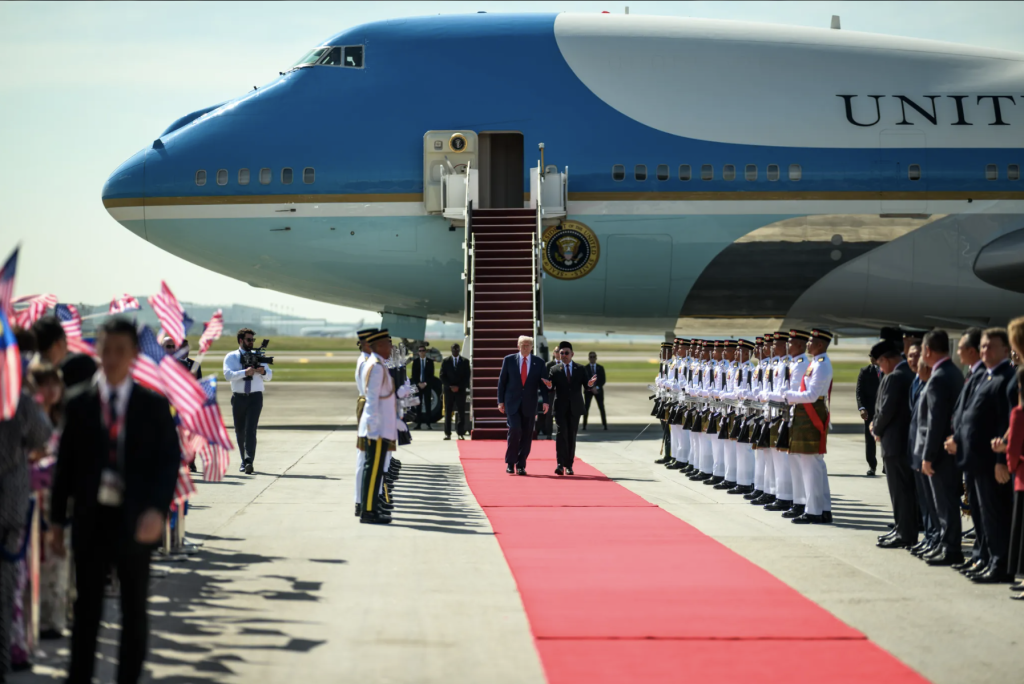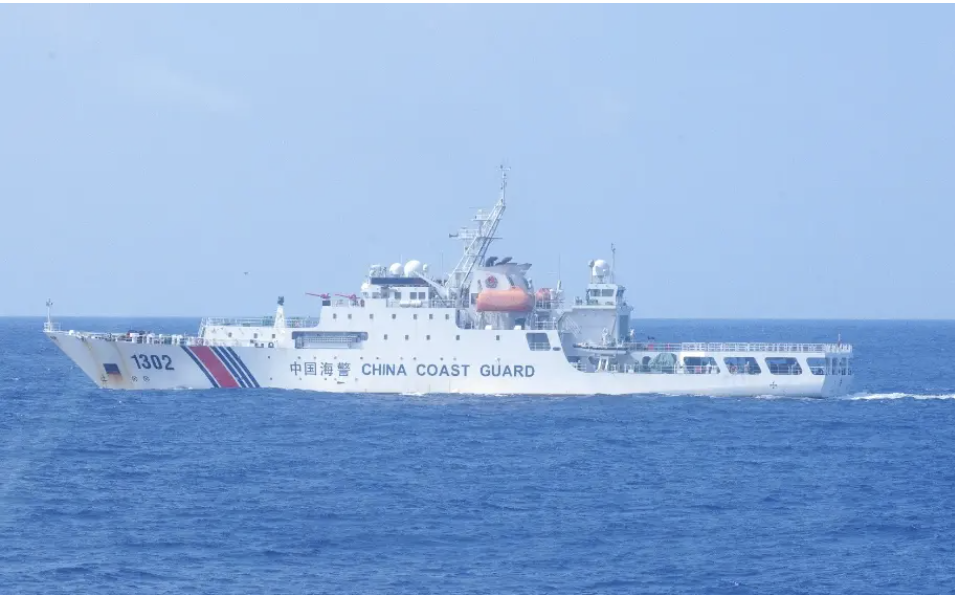The Price of Tomorrow
- Analysis
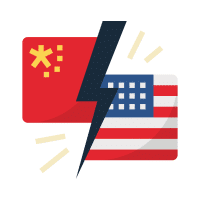 Rendy Pahrun Wadipalapa
Rendy Pahrun Wadipalapa- 02/04/2025
- 0
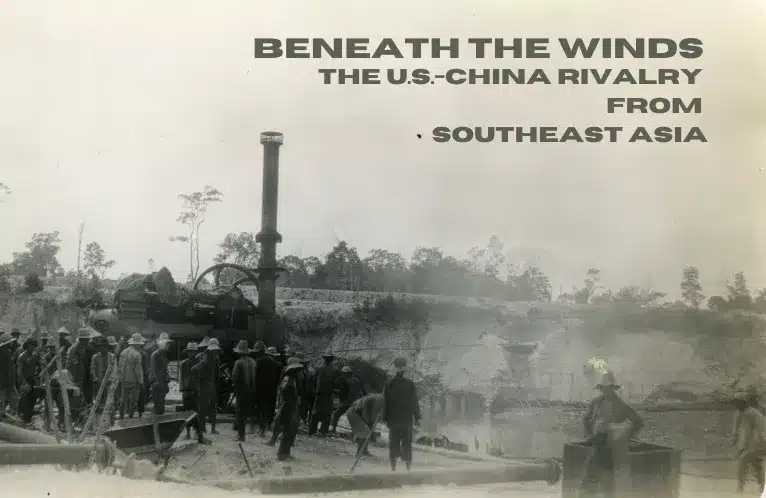
The China Focus team and I are happy to announce a new series for The Monitor – Beneath the Winds: The U.S.-China Rivalry from Southeast Asia. The title is an allusion to Anthony Reid’s classic introductory textbook Southeast Asia in the Age of Commerce 1450-1680, Vol. 1: The Lands Below the Winds.
Southeast Asia has always existed between larger powers, resulting in centuries of experience mediating, benefiting from, and, sometimes, violently opposing the wishes of enormous military and economic forces. Centuries ago, before sailing technology was advanced enough to sail against them, the shifting of monsoon winds meant that the energy propelling merchants between India and China left these travelers lingering in Southeast Asia for months at a time, trading and spreading elements of their culture frome home. Throughout the Cold War, the region was caught between the Soviet Union and China on the one hand and the United States on the other (always with significant local agency on how to respond to aid and destruction from abroad). Now, Southeast Asia is a key point in the rivalry between the United States and China.
The point of this series is to promote insights on the U.S.-China rivalry from experts on and from Southeast Asia. The idea is that, for the moment, we have achieved saturation on what American and Chinese experts have to say about one another, and it is time to realize that the entire globe is impacted by these two major powers’ success or failure in finding a way to coexist.
The first entry in this series, from Rendy Pahrun Wadipalapa at the Research Center for Domestic Government, National Research, and Innovation Agency in Jakarta, looks at China’s investment in Indonesian nickel mining and its social and environmental consequences.
Garry Lotulung granted us permission to use photos from his excellent photo story Rise of EV’s Destroying Sulawesi Rainforests and Coastal Communities.
Thanks,
Nick
The Price of Tomorrow: Inside Indonesia’s Chinese-Powered Sprint to 2045

‘I express my deepest gratitude and ensure that Indonesia will continue to make various improvements and efficiencies, so that together with China we strive to become a developed nation by 2045’.
Luhut Binsar Pandjaitan, personal Instagram post, April 4, 2023.
In those carefully chosen words, laden with both aspiration and acquiescence, Luhut Binsar Pandjaitan—Indonesia’s powerful Maritime and Investment Affairs Minister—captured the bittersweet essence of Indonesia’s economic transformation. Landing in Beijing before dawn for a meeting he would later boast was the first granted to any Asian representative by China’s newly appointed Chairman of the National Development and Reform Commission (NDRC), Zheng Shanjie, Luhut’s Instagram post reads like a love letter to modernization at any cost. Proudly citing $30.8 billion in Chinese investments since 2014 across 15,906 projects, his words embody both the dreams and compromises of a nation rushing toward development, where the promise of progress intertwines with the reality of dependence.
The timing was perfect: as Indonesia maintained its position as one of the strongest economies among G20 nations despite global uncertainties, Luhut’s Beijing pilgrimage represented more than just routine diplomacy. It was a testament to President Joko ‘Jokowi’ Widodo’s decade-long courtship of Chinese capital, a strategy that has transformed Indonesia’s raw material wealth into industrial might through aggressive ‘downstream policies’. As one of the architects of Indonesia’s pivot to China during the Jokowi era (2014-2024), Luhut’s words reflect not just policy, but a particular vision of Indonesia’s future—one increasingly built on Chinese capital, technology, and influence, all in service of the dream to become a developed nation by 2045.
From Raw Exports to Industrial Might: Indonesia’s 2045 Vision
Indonesia’s ambitious dream in 2045—its centennial year of independence—has found its most powerful expression in the dramatic transformation of its nickel industry. The government envisions Indonesia becoming the world’s fifth-largest economy with a per capita income between $23,000-30,300, while reducing poverty rates to 0.5-0.8 percent and improving income distribution with a Gini ratio of 0.29-0.32. Beyond economic metrics, the plan emphasizes human capital development (targeting a Human Capital Index of 0.73), environmental sustainability (aiming for a 93.5% reduction in greenhouse gas emissions), and increased global influence (targeting top 15 in the Global Power Index).
Jokowi himself has explicitly tied this vision to his signature policy, declaring that successful downstream processing policy across all sectors—from minerals to agriculture and fisheries—is key to achieving advanced nation status by 2045, citing assessments from the World Bank, McKinsey, IMF, and OECD.
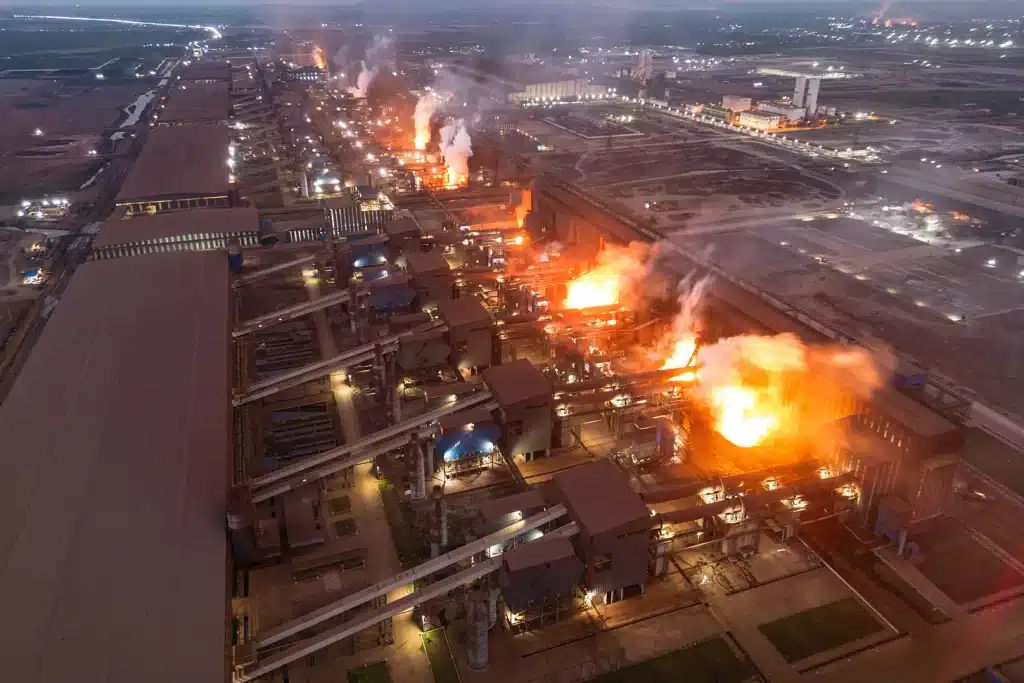
Yet, the path to this golden future is paved with complex trade-offs between rapid development and sustainable growth, national sovereignty and international partnership, environmental preservation and industrial advancement. Jokowi’s aggressive downstream processing policy (‘hilirisasi nikel’)—the strategy to transform the raw nickel ore exports into higher-value processed products through domestic industrial processing—marks a decisive break from decades of raw material exports, transforming the archipelago’s vast nickel reserves into a cornerstone of its industrialization strategy. The numbers are striking: what began as a modest nickel export industry worth $5.4 billion in 2013 has exploded into a $35.6 billion powerhouse of processed nickel exports by 2022.
The employment impact tells its own story of transformation. In Central Sulawesi alone, nickel processing employment skyrocketed from 1,800 to 71,500 workers. Similarly, government revenue from the sector witnessed a phenomenal jump from $1.9 billion in raw exports to $31 billion after downstream processing was implemented. These figures, proudly cited by President Jokowi, represent not just economic statistics but a validation of Indonesia’s strategy to leverage its natural resources for industrial development.
Yet this dramatic industrial transformation, while powering Indonesia’s march toward its 2045 vision, has created an increasingly complex dependency on Chinese investment, from financing and technology to market access. In just a few short years, China has engineered a remarkable takeover of Indonesia’s vast nickel reserves, controlling an estimated 90% of the country’s nickel processing facilities through a complex web of joint ventures, industrial parks, and billion-dollar investments. From the sprawling industrial complexes in Morowali to the massive smelters in Weda Bay, Chinese companies like Tsingshan Group and Huayou have transformed Indonesia’s nickel landscape. These industrial parks, backed by Chinese banks and expertise, have turned sleepy coastal areas into industrial powerhouses churning out processed nickel for China’s electric vehicle and stainless-steel industries. The figures tell a compelling story: Indonesia’s nickel exports to China skyrocketed from $3.2 billion in 2019 to an astounding $17.6 billion in 2022.
China’s dominant position in Indonesia’s investment landscape in critical minerals stems from a powerful combination of cost advantages, technological competency, and a comprehensive industrial ecosystem approach. Most importantly, Chinese investment offers significantly lower capital expenditure—with Japanese, American, and European processing technology costing up to twice as much as Chinese alternatives. This cost efficiency, coupled with China’s remarkable technological advancement over the past 30 years, makes Chinese partnerships particularly attractive for Indonesian mining companies developing domestic smelters.
But this marriage of convenience has raised eyebrows both in the region and globally. The United States, increasingly concerned about China’s grip on critical minerals, has begun exploring partnerships with the Philippines to develop alternative nickel supply chains. Meanwhile, local Indonesian communities find themselves caught in the crossfire, grappling with environmental degradation, displaced livelihoods, and rapid industrialization.
Environmental Devastation and Human Costs
The transformation of coastal villages into industrial complexes has left an indelible mark on the landscape: once-clear rivers in Pongian, Banggai, now run brown with nickel ore pollution, leaving 416 households without potable water. The statistics paint a grim picture: CO₂ emissions from nickel production and deforestation have exploded from 1.5 million tons in 2018 to 32.2 million tons in 2021, while 76,301 hectares of tropical forest have vanished within 329 nickel concessions
This environmental catastrophe is matched by an equally troubling financial dependence. Indonesia’s debt to China has swelled to $20 billion in 2023. The terms of these arrangements follow a familiar pattern: state-owned Chinese companies establish joint ventures, secure massive loans from Chinese banks, and impose stringent conditions—including requirements to purchase 70% of raw materials from China and employ Chinese workers.
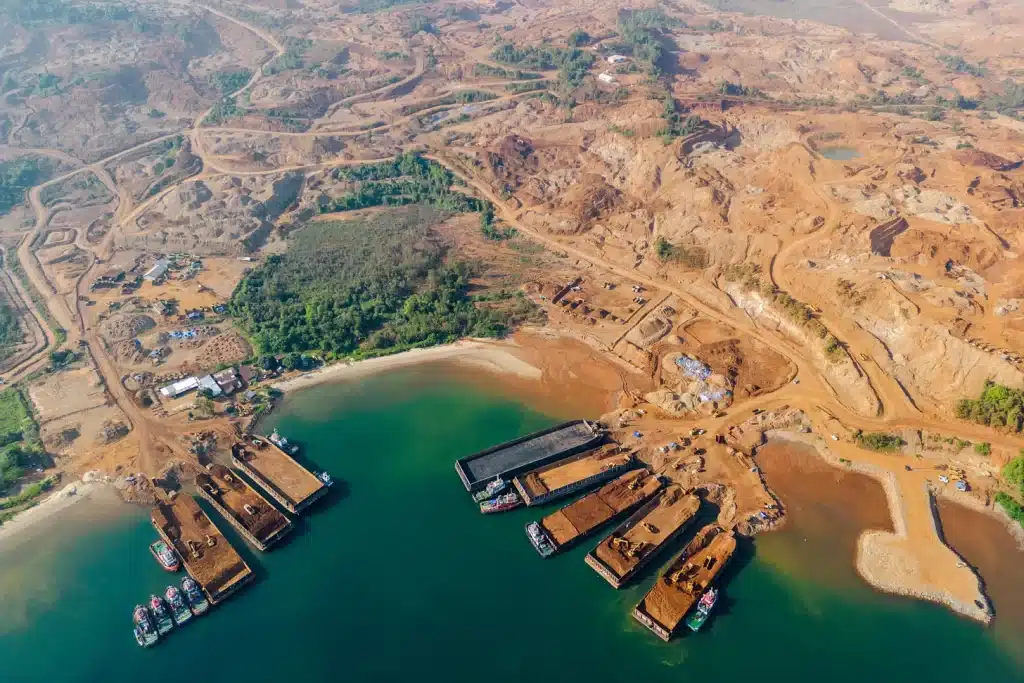
The human cost of this industrial transformation is starkly evident in places like Morowali’s Fatufia village, where residents battle chronic respiratory issues from coal power plant emissions. A December 2023 smelter explosion in Morowali that claimed 21 lives and injured 38 others stands as a tragic testament to the risks of rapid industrialization.
Land disputes have become endemic, particularly near industrial complexes like Weda Bay, where communities resist compensation offers of $0.5 per square meter for agricultural land worth between $1.84-13.5. Traditional farming and fishing livelihoods, already threatened by environmental degradation, are being sacrificed on the altar of industrial progress without adequate compensation or alternatives.
The situation is particularly precarious given Indonesia’s strategic importance in the global electric vehicle battery supply chain, where Chinese dominance leaves little room for negotiation.
Between Giants: Indonesia’s Critical Minerals Strategy
The evolving competition between the US and China over Indonesia’s critical minerals sector has become a defining feature of Prabowo Subianto’s early presidency (2024-present), as Indonesia’s new leader inherits an economy where Chinese companies control the majority of nickel smelting facilities and hold $20 billion in resource-backed investments. His strategic decision to visit both Beijing and Washington DC, securing $10.07 billion in broad investments from China versus specific commitments from the US on critical minerals and clean energy transition, demonstrates Indonesia’s attempt to navigate between the two superpowers.
Yet, President Prabowo’s early months in office suggest an intensification rather than a recalibration of Indonesia’s economic dependence on China. His recent state visit to Beijing, followed by his Investment Minister’s additional $7.46 billion deal across four sectors, demonstrates a clear continuation of Jokowi’s pro-China economic policy. This continuity is hardly surprising given Prabowo’s track record as Defense Minister (2019-2024) under Jokowi, where he cultivated close ties with Chinese officials and established the Indonesia-China 2+2 Forum, even characterizing China as a “brother” nation during the 2023 Shangri-La Dialogue. While Prabowo has made diplomatic gestures toward diversification through visits to Peru, Brazil, and the United Kingdom, his recent agreements—particularly in critical minerals, green technology, and infrastructure development—suggest that China’s dominant position in Indonesia’s economy will not only persist but potentially strengthen under his presidency, raising continued concerns about economic dependency and debt exposure despite his broader international outreach efforts.
The United States’ approach, revealed in Prabowo’s meeting with President Biden, focuses on developing “diverse and resilient critical mineral supply chains”—a clear attempt to counter China’s near-monopolistic control of Indonesia’s nickel processing sector. The US strategy emphasizes environmental standards and sustainable mining practices through initiatives like the Just Energy Transition Partnership (JETP), standing in marked contrast to China’s more immediate, infrastructure-heavy investment approach that has raised environmental and labor concerns.
The debate over Indonesia’s resource development often gets oversimplified into a US-China binary choice, but the reality is far more complex. While Chinese investment has been instrumental in rapidly developing Indonesia’s nickel processing capabilities, the concentration of smelting facilities under Chinese control raises legitimate concerns about strategic vulnerability. The United States’ counter-narrative of environmental standards and sustainable practices offers a seemingly attractive alternative, yet such a vision, while it aligns with global sustainability goals, requires careful consideration to ensure they can effectively balance the standards, environmental protection, and economic development needs.
What Indonesia urgently needs is a comprehensive strategy to build domestic capacity alongside foreign partnerships. This means investing in technical education and research institutions, strengthening environmental regulations and enforcement mechanisms, improving labor protection frameworks, and ensuring technology transfer agreements are actually implemented. The concerning track record of labor violations in Chinese mining operations reflects not just on the operators but on Indonesia’s own capacity to enforce its standards.
The path forward requires threading a difficult needle: maintaining openness to foreign investment while systematically building domestic capabilities and regulatory strength. As Indonesia navigates between great power competition and its own development imperatives, the fundamental question becomes not whether foreign investment and expertise are necessary—they clearly are—but whether the current model of dependency can ultimately deliver the sovereign, sustainable development that Indonesia envisions for 2045.
Rendy Pahrun Wadipalapa is a researcher at the Research Center for Domestic Government, National Research, and Innovation Agency (BRIN) in Jakarta, Indonesia.
Garry Lotulung’s photography can be found here.
The views expressed in this article represent those of the author(s) and not those of The Carter Center.

